The Human Ritual World
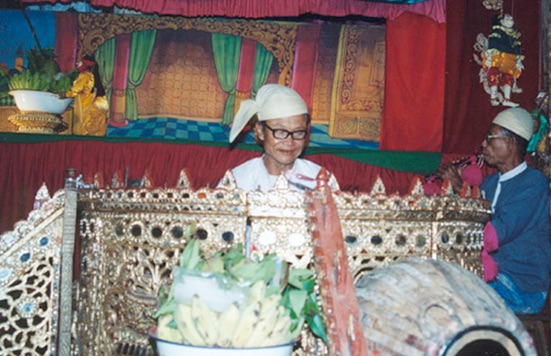
Nat Pwe ritual
Characters played by puppets, like the nats and the ogres, are also acted by human actors or dancers during a nat pwe, a ritual held in honour of the nats. The human natkadaws (wives of the nats) dance for their nats, act as oracles, are masters of ceremony, and council followers on marital and financial matters. A nat pwe lasts three days to a week.

A green and undamaged coconut is the symbol of the nats. It is the centre piece of the traditional offering, together with bananas, and a lit candle on top.

The natkadaw lifts the homage-offerings bowl towards the orchestra.
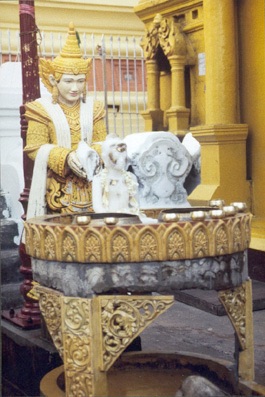
Thagyar Min, the King of the Celestial Beings, is also present in the Shwedagon pagoda in Yangon, the capital of Myanmar. He stands behind a water basin containing a small alabaster figure of the Buddha, which is sprinkled with water as an auspicious act.
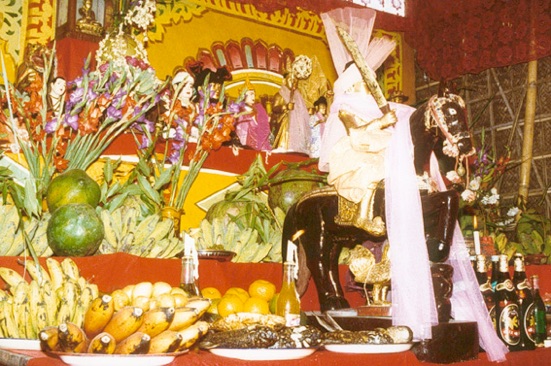
Offerings are displayed on tables: bananas, flowers, perfumes, cigarettes, food and drink, according to the taste of the nats. Requisites, like swords or fans, are also displayed and ready for use. Professional natkadaws, mostly women, perform for the nats. They enjoy little esteem amongst the general public and are only honoured, like the nats, out of fear. Male devotees, often homosexuals or transvestites, dressed in elaborate costumes and wearing extravagant make-up, dance for their preferred nats in order to obtain certain favours. The nat on the dark horse is Ko Gyi Kyaw, a boisterous nat.
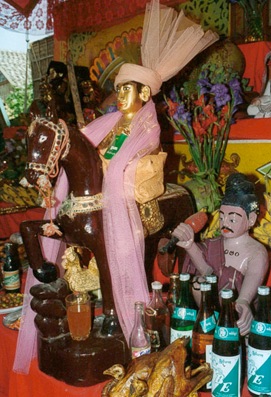
Ko Gyi Kyaw is fond of cockfighting, women, opium and Mandalay rum, and one of the stars of a nat pwe. He appears on a brown horse with a sword on his shoulder, and is often accompanied by his side kick Bo Nyo who is generously tattooed and carries an enormous mallet. Ko Gyi Kyaw incites his followers to perform the dance of the fighting cocks.

One of the female natkadaws dances Ko Gyi Kyaw, holding a wooden cock in one hand and a bowl with money, to be given to the musicians, in the other.
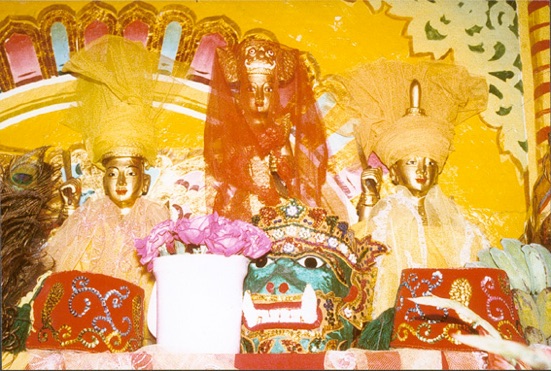
The Taungbyon Brothers and their mother Popa Medaw, an ogress (Belu) and eater of flowers, are among the most popular nats although Popa Medaw does not belong to the official pantheon of 37 nats. The brothers carry swords, and peacock feathers are the attribute of Popa Medaw. Their story tells the drama of King Anawrahta, which is thus relived at a nat pwe.
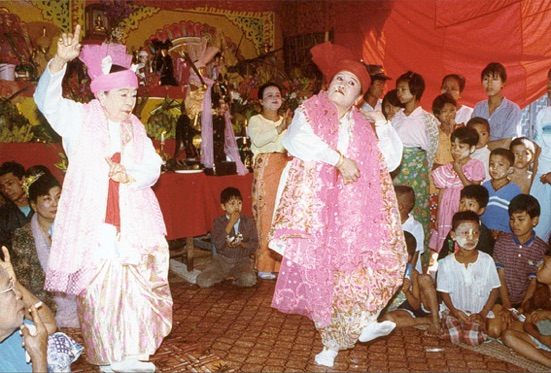
Two natkadaws representing the Taungbyong Brothers dance at a nat pwe.
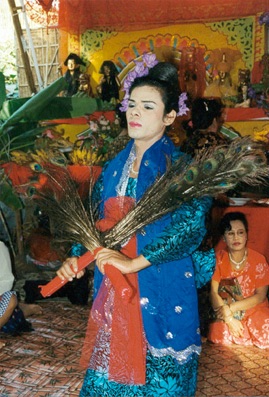
A male devotee dances in honour of Popa Medaw, with peacock feathers in his hands.
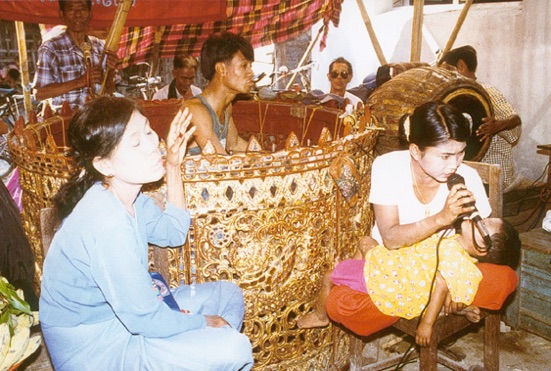
Female singers perform songs from the nat than repertory, odes to the nats, taken from the Mahagita Medanikyan, a classical anthology. Each ode is dedicated to one of the 37 and tells the story of that nat's life and death.
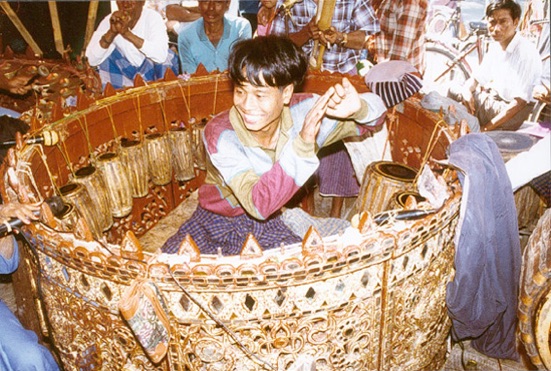
The orchestra --often amplified-- accompanies the songs and the dances, with its deafening and trance-inducing sounds. The gong chime is the central instrument.
